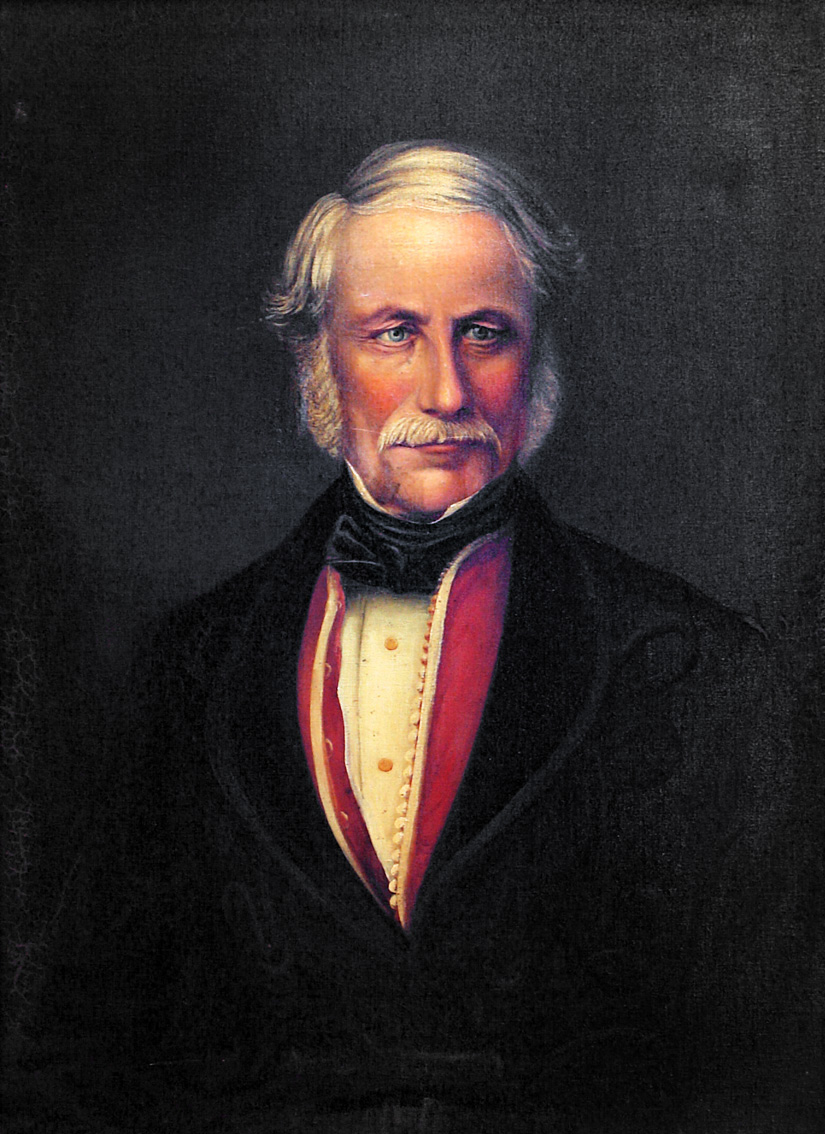John Larkins Cheese Richardson is significant as the Superintendent of Otago who had to cope with the massive changes of the 1861–63 gold rushes. He was born in Bengal, India, in 1810, the son of an East India Company civil servant. After education in England, he forged a successful military career in India, attaining the rank of major and being decorated for gallantry. In 1834 he married Charlotte Laing. The couple had three children together before Charlotte’s death in 1842. Richardson retired from the Indian army in 1852 and moved to England. He was keen on a retirement career as a farmer in the colonies. He had already visited South Africa but found it not to his liking. In 1852 he sailed for New Zealand with his 10-year-old son. They toured the country and finally decided to settle in Otago.
Returning to England, Richardson spent the next three years learning the practical skills he would need and gathering together farming equipment. In 1856 he sailed for the colony with all three children and 20 tons of luggage. He purchased 150 acres at Puerua, built a thatched hut and set about clearing and planting his land. By 1858 he had completed a two-storeyed homestead (still in use and a Category 1 historic place) on the farm which he called Willowmeade. It wasn’t long before he was drawn into community life. A devout Anglican, he was a charming man, very witty and with a famous sense of humour.
In 1860 Richardson was elected to the Otago Provincial Council and two months later became its Speaker. He had entered politics to push for farming settlement and immigration under the slogan ‘Land for the people and people for the land’. He was a man of great integrity and was appalled at the scandal surrounding James Macandrew’s misuse of public money as the Provincial Superintendent. Richardson led the charge to have Macandrew removed from office. He was then elected to replace him – the first Englishman and first Anglican to be Superintendent of Scottish Otago.
Just months later came the discovery of gold at Tuapeka which transformed provincial fortunes forever. Richardson had the difficult job of coping with all the demands for roads, bridges and other amenities that the goldfields required. He was judged too slow and cautious in his programme and lost the next election. He had also rejected provincial separatism in favour of a united nation, a political policy that was unpopular in Otago at the time.
Out of favour in Otago, Richardson represented New Plymouth in parliament and in 1868 was appointed Speaker of the Legislative Council. He earned great respect for this work and was knighted in 1874. Richardson was also active in social causes, particularly in education. He was responsible for the admission of women to Otago University, a cause he promoted in league with Miss Learmonth Dalrymple. By the end of his life in 1875 he had become a beloved figure in Otago, popularly known as ‘the Old Major’.

Major Sir John Richardson